Curated OER
The Potential Consequences of Climate Variability and Change
Learners analyze the impact of climate variability and change utilizing a broad span of topics over a wide range of grade levels. This three lesson unit is easily adapted for the various instructional levels listed.
Curated OER
U.S. Geography: The South
Young geographers complete a research project. They list the physical features found in the American South. They then discuss the economy, culture, and geography found in the South. They work in groups to research one of the five...
Curated OER
The 50 States and its Holidays
Though the format of this ELL lesson is confusing (the standards listed are for plate tectonics, yet the objectives are for American geography and holidays), a teacher could glean some ideas from the main idea. Here, pupils complete a...
Curated OER
World Map and Globe-Equator, North Pole, and South Pole
Students identify the Equator, North Pole, and South Pole on a map. In this geography lesson, students use a world map and circle the North and South Pole. Students locate the Equator on a globe and use a map marker to highlight it.
Curated OER
Oh, the Regions
Focus on the geography of Oklahoma. In this activity, learners compare different geographic regions in Oklahoma, create a collage to share their results, and identify important landforms throughout the United States, such as the...
Curated OER
Peace Corps Challenge Game-National Trees
Students explore trees around the world. In this world geography and tree lesson, students compare familiar local trees and discuss similarities and differences. Students give opinions about why the oak tree was chosen as our...
Curated OER
Everybody Cooks Rice
Students read the book, "Everybody Cooks Rice," and they participate in activities pertaining to the book. They identify countries mentioned in the text and locate them on a world map. They use an atlas to identify the climatic...
K12 Reader
Location, Location, Location
Why do some places in the world have more people living there than other places? Learn about the ways the countries have formed around natural resources with a reading comprehension activity. After kids read a short...
Curated OER
Discovering the Local Community
Third graders create a mini-atlas of the human and physical characteristics of their local community, which includes landforms, climate, vegetation, population, and economics. They use nonfiction map-related resources to obtain ...
Curated OER
Opening Doors to Social Studies with Children's Literature: The Desert Alphabet Book
Students explore the geography of the United States. In this social studies instructional activity, students identify the major deserts on a map of the United States.
Curated OER
Marvelouw Mongolia
Students are able to: tell basic information about Mangolia: locate it on a world map, locate its capital, name the countries surrounding Mongolia, read a Mongolian folk tale, and explore about the balalaika.
Curated OER
Max Knows Mexicao, United States and Canada
Students utilize their map skills to explore the regions of North America. They explore the physical characteristics and climates of the regions. Students label their map and prepare a presentation of their findings.
Curated OER
Indian Meets Colonist - Role Play
Learners role play as colonists and Indians. They are assigned a specific colony and Indian group, and write a script and then role play in front of their classmates.
Curated OER
Paws in Jobland
Young scholars explore jobs in different countries . In this lesson plan about different countries through research. Students are broken into groups and given a country to research. Each group is provided with a worksheet with 14...
Curated OER
Equator, North Pole, and South Pole
Students identify the Equator, North Pole, and South Pole on the globe. In this map skills lesson, students use a globe marker to locate specific locations on the globe. Students find where they live in relation to the Equator.
Curated OER
Wappo Indians of Napa County
Third graders describe the American Indian nation in their local region long ago and in the recent past in terms of national identities, religious beliefs, customs, and various folklore traditions. They synthesize their findings into a...
Curated OER
Wappo Indians: Animals They Hunted
Third graders examine the hunting and foraging practices of the Wappo tribe. They discover Wappo words for food and determine which animals still live in Napa County. They research the diet, habits and homes of these animals.
Curated OER
Africa - Clothing
Third graders discuss the differences between the clothing choices within the three regions in Africa and in Hawaii.
Curated OER
Should Soil Be Sterile?
Learners determine if the sterilization of topsoil is beneficial to seed germination and plant growth. They grow plants alongside control groups, make and record observations of plant growth and measure plant biomass.
Curated OER
Floodplain Modeling
Young scholars simulate the impact of fluctuating river volumes on structures and landforms. They experiment with table top-sized riverbed models and water. Students consider how human design can help mitigate the effects of a flood.
Curated OER
Through A Pinhole
Students construct a pinhole camera using their knowledge of the physics of light. This interdisciplinary activity give students hands-on experience in understanding the production and processing of photographic images.
Agriculture in the Classroom
National Agriculture in the Classroom: A Look at Louisiana Agriculture [Pdf]
Learn facts about the agricultural industry of Louisiana, including climate, soil, crops, and animals. PDF (requires Adobe Reader).
Agriculture in the Classroom
National Agriculture in the Classroom: A Look at Maine Agriculture [Pdf]
A terrific site for learning about the agricultural industry. Easy-to-understand, bulleted facts on Maine climate, soil, crops, and animals.
Agriculture in the Classroom
National Agriculture in the Classroom: A Look at Mississippi Agriculture [Pdf]
What a terrific site to learn about a variety of aspects of the agricultural industry. You will find bulleted facts on the Mississippi climate, soil, crops, and animals.

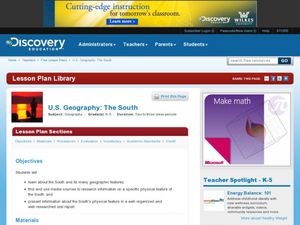
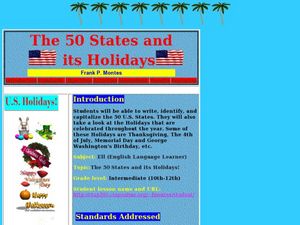







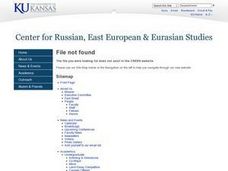
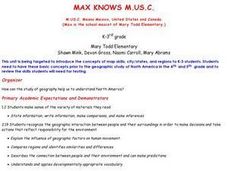
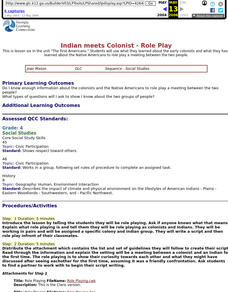
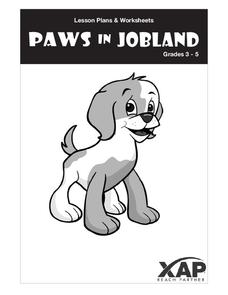




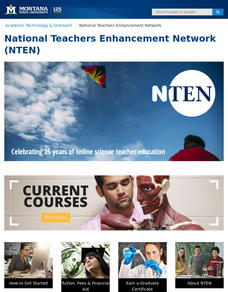

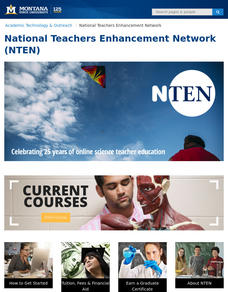
![National Agriculture in the Classroom: A Look at Louisiana Agriculture [Pdf] Handout National Agriculture in the Classroom: A Look at Louisiana Agriculture [Pdf] Handout](https://d15y2dacu3jp90.cloudfront.net/images/attachment_defaults/resource/large/FPO-knovation.png)